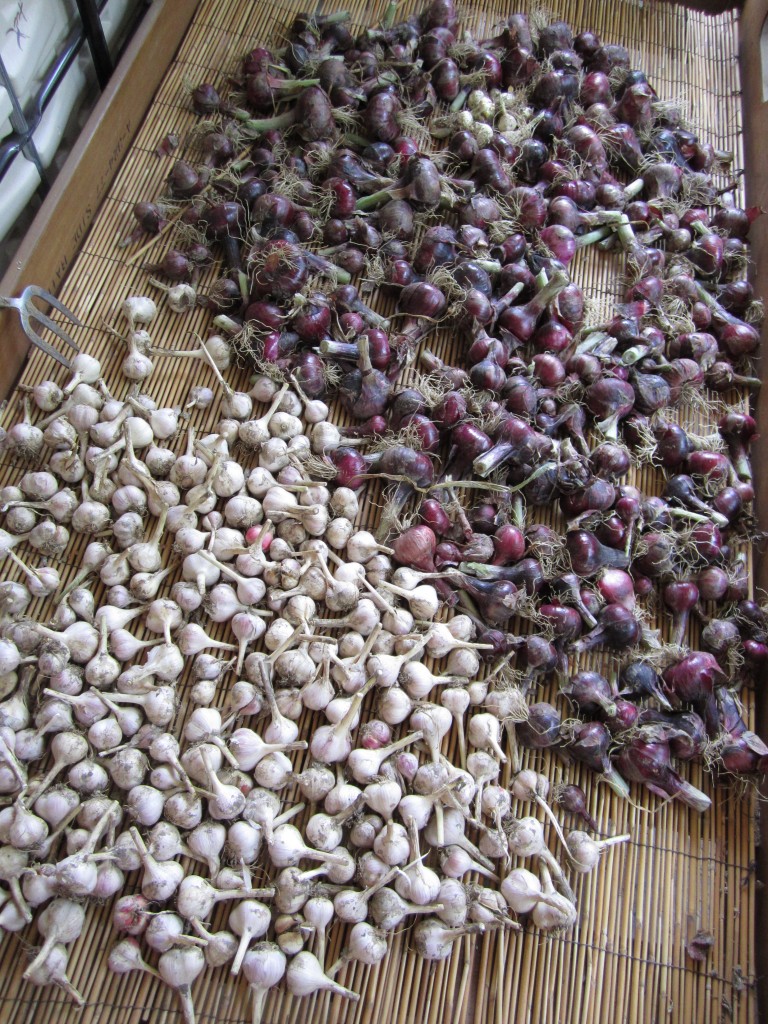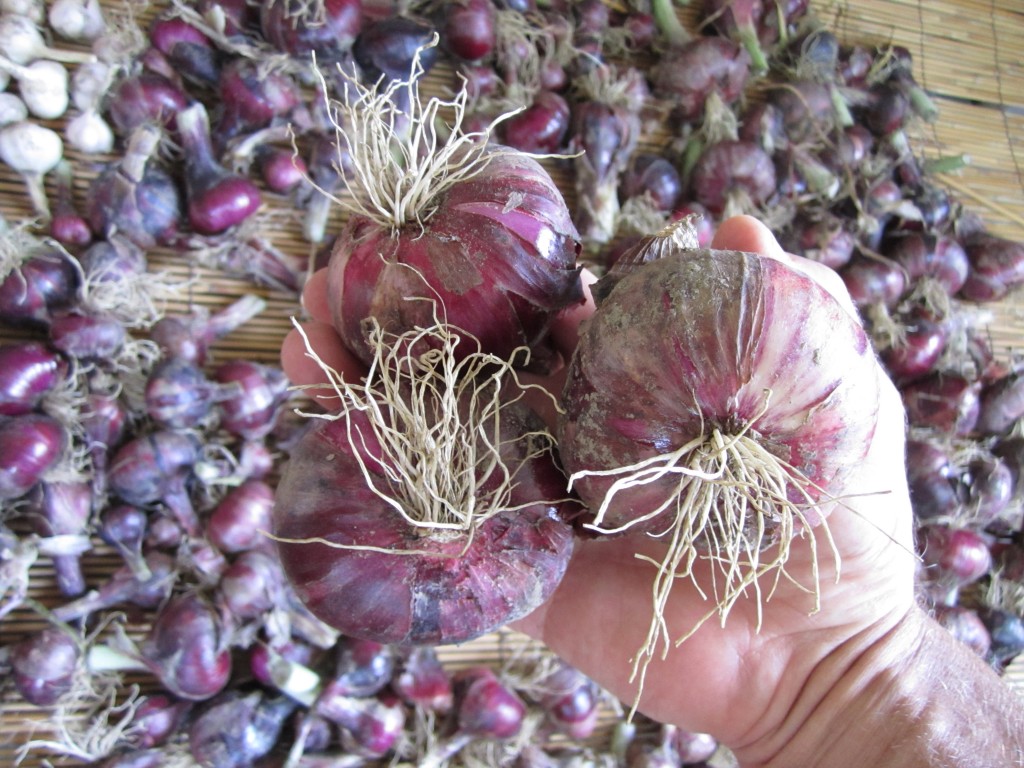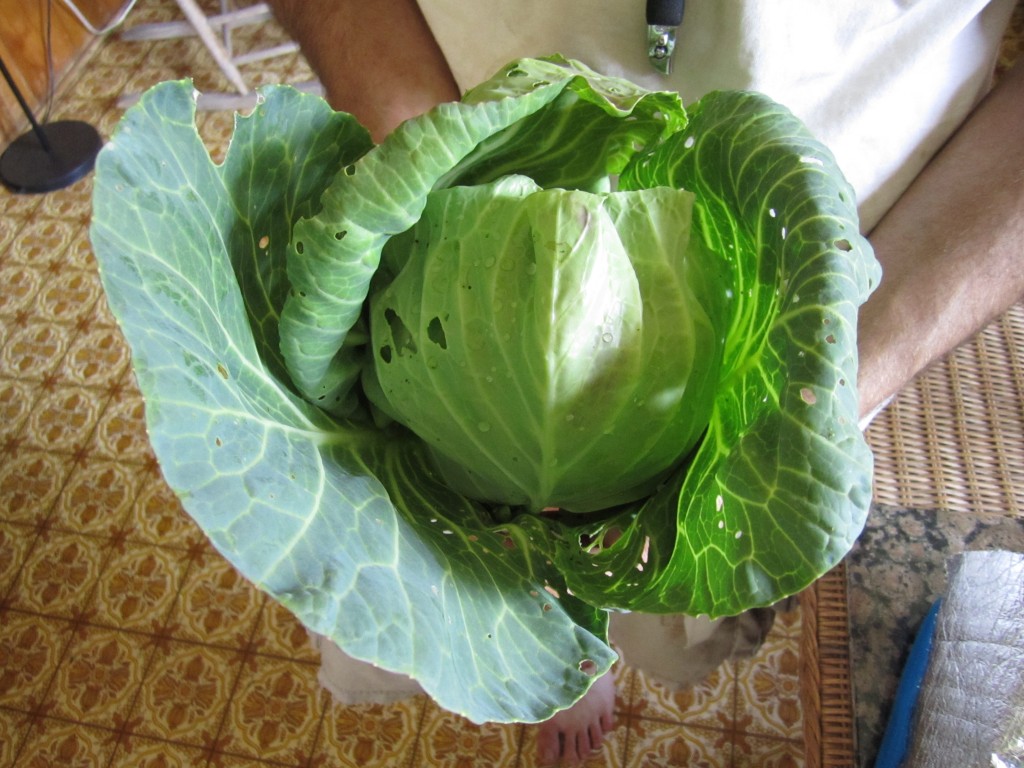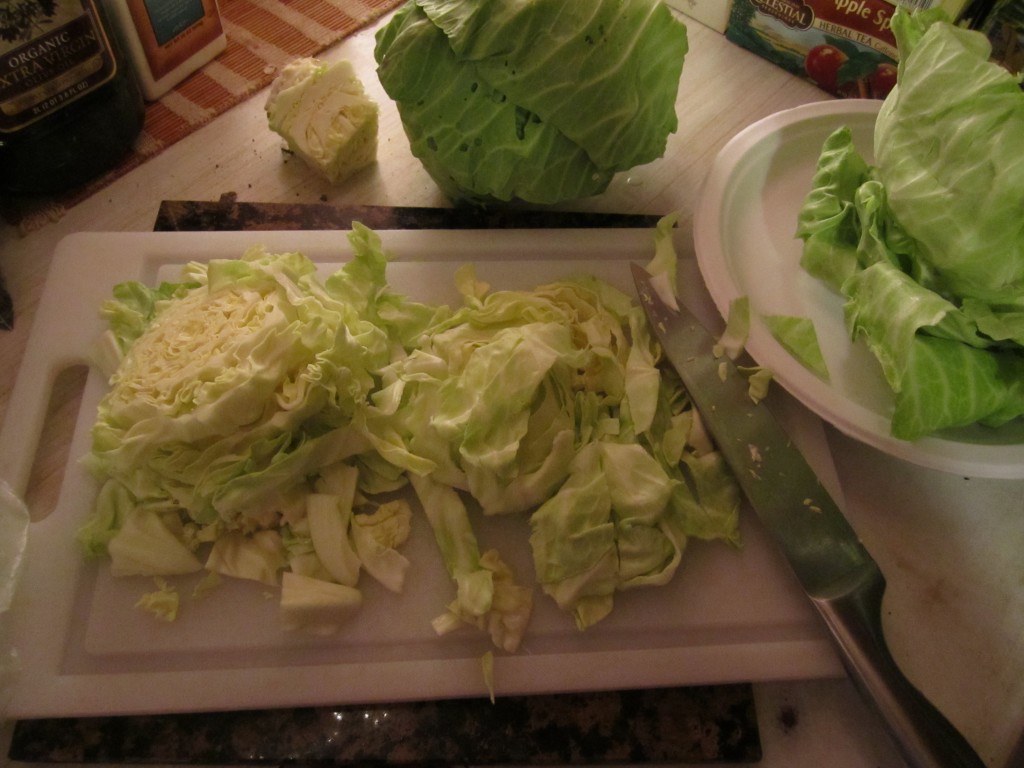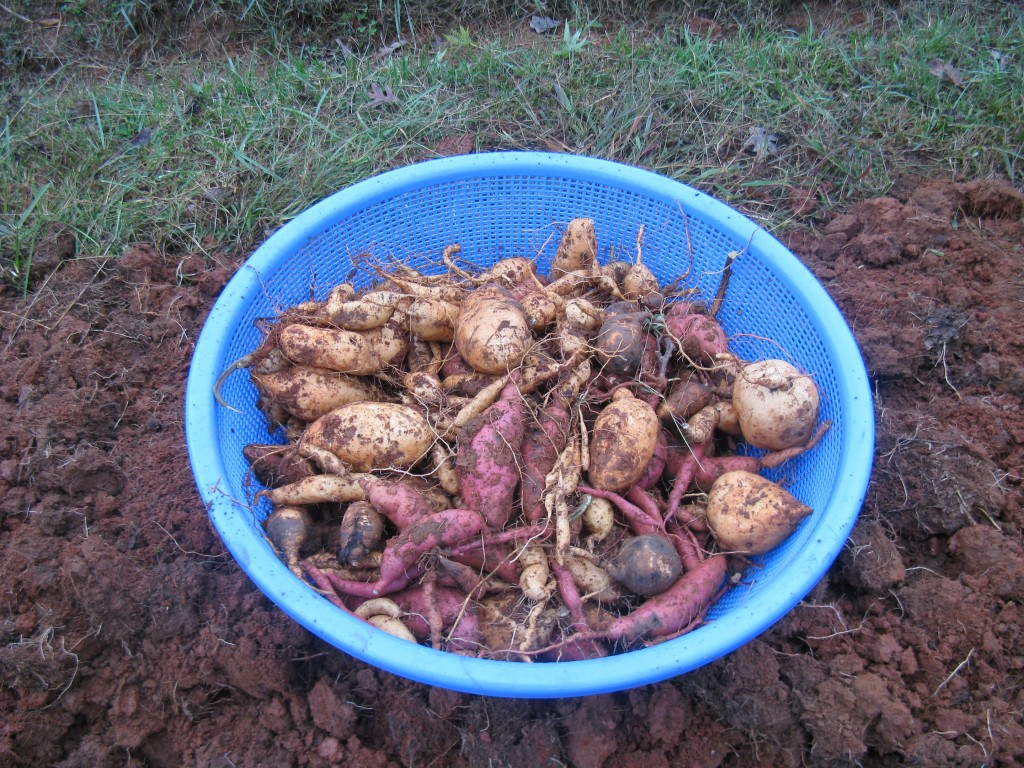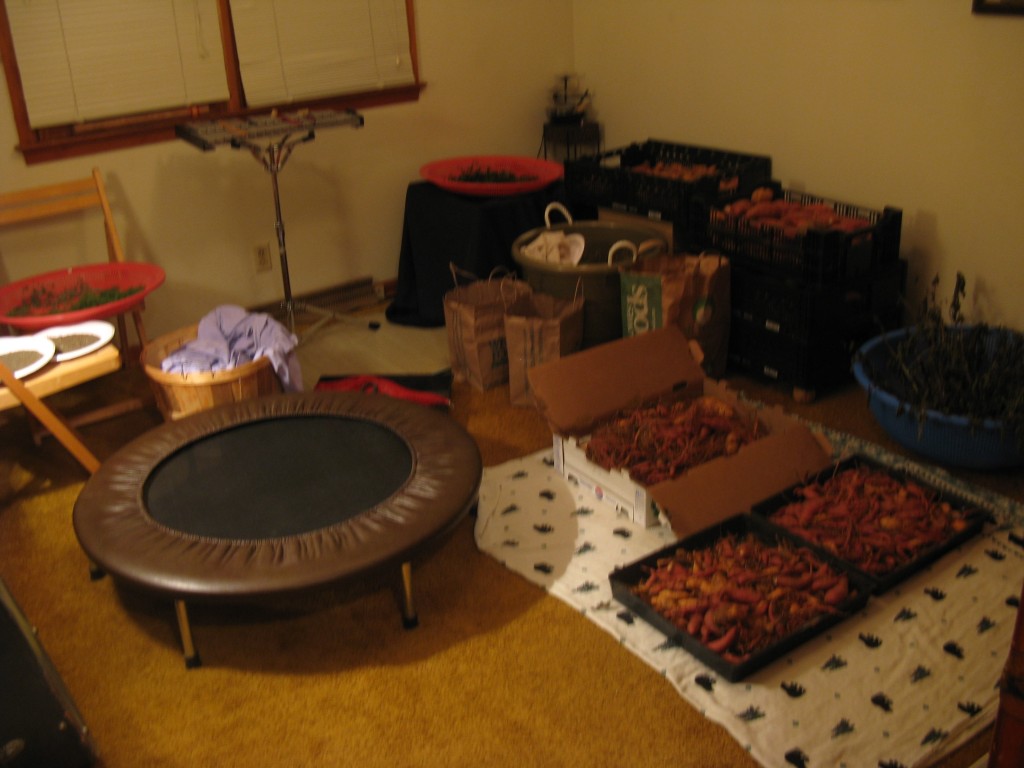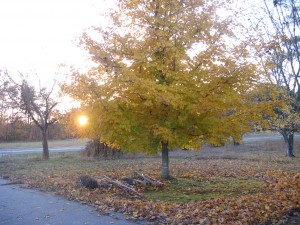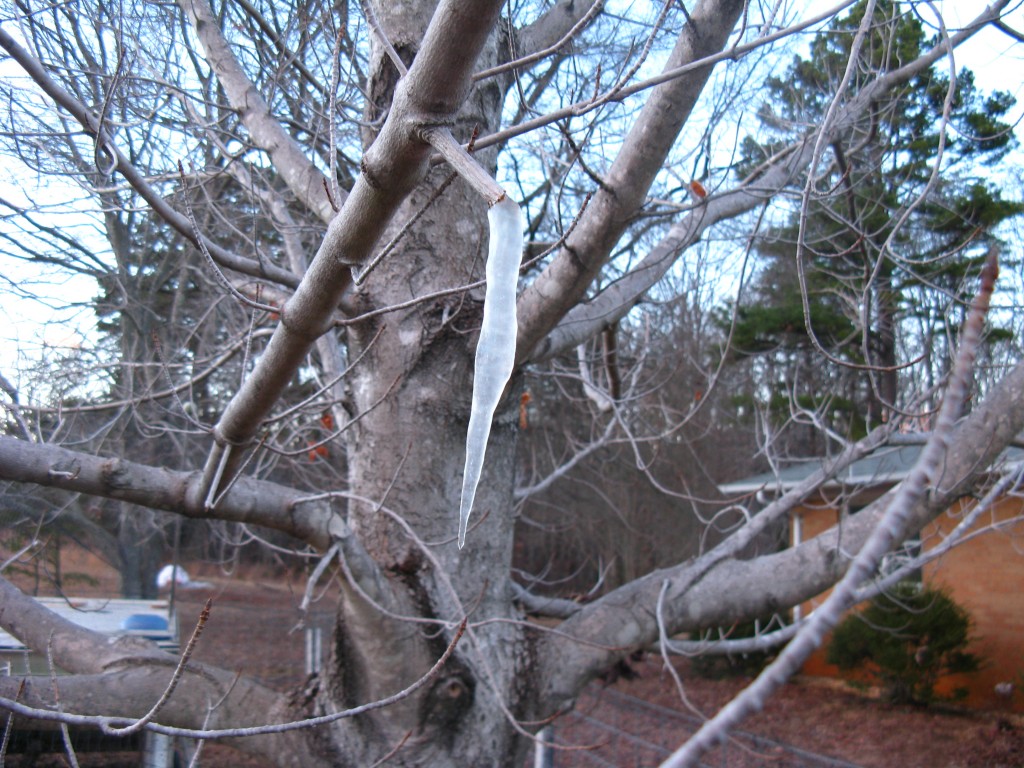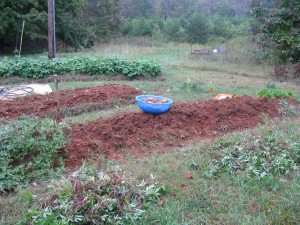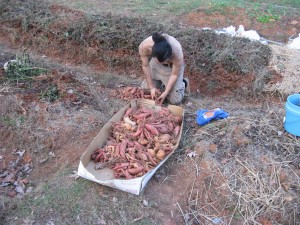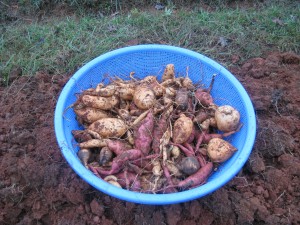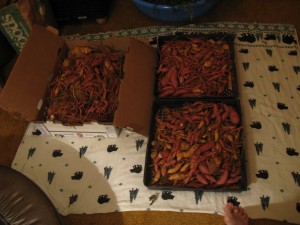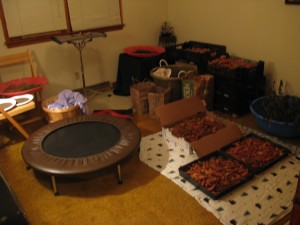basil, basil, basil!
rare is the person who doesn’t use basil in their cooking! jason and i use basil in heavy quantities, especially in soups, beer breads, pesto pasta salads, and most especially fresh in stir fries during the summer and fall!
although we may think of basil as an italian herb, it originates from india! there are different sorts of basil, of course; the variety that we grow and that most people use in italian cooking is called “sweet basil.” the specific “sweet basil” variety that we planted in 2013 and plan to plant again this year is called genovese.
basil also has health benefits (of course!). the essential oils found in basil have been found to be antiviral, antimicrobial, antifungal, and might even fight cancer. exciting! it certainly is delicious, and basil and its sibling species are cultivated by people all over the world.
the time is nearing for us to plant another round of basil “bushes,” and we still have a good bit left of our harvest from last year! this is because our processing and storing of last year’s crop was simple and not time consuming. therefore we were able to store it all without wasting any.
my mother taught me how to make pesto many years ago, and making pesto can be a great way to store basil (she uses walnuts instead of pine nuts), but she also taught me an even simpler and more long-term versatile way to “keep” our basil for months and months. this way doesn’t require that you purchase parmesan, nuts, or other important pesto ingredients.
easy = basil + olive oil & put it in the freezer!
most of our basil is stored this way, with a few bags of dried basil (which is also super easy!) still left.
to freeze your basil, all you need to do is wash the leaves and pull them from the stems. jason and i prune our basil bushes periodically and process a little as we go through the growing season, but at the end we simply cut the entire basil bush and wash the whole bush with our shower’s spray nozzle. we have a huge colander (3 feet in diameter) that works great for when we are spraying the bushes down. then we set to pulling all of the leaves off by hand. the plus side: your fingers smell like delicious basil for days!
after we have gallons of loose basil leaves, we put them in our cuisinart food processor with some olive oil and blend away, making sure to add enough oil so that the mixture is a little bit slushy. this helps the basil freeze better and staves off any freezer burn that might happen after months in the ice box.
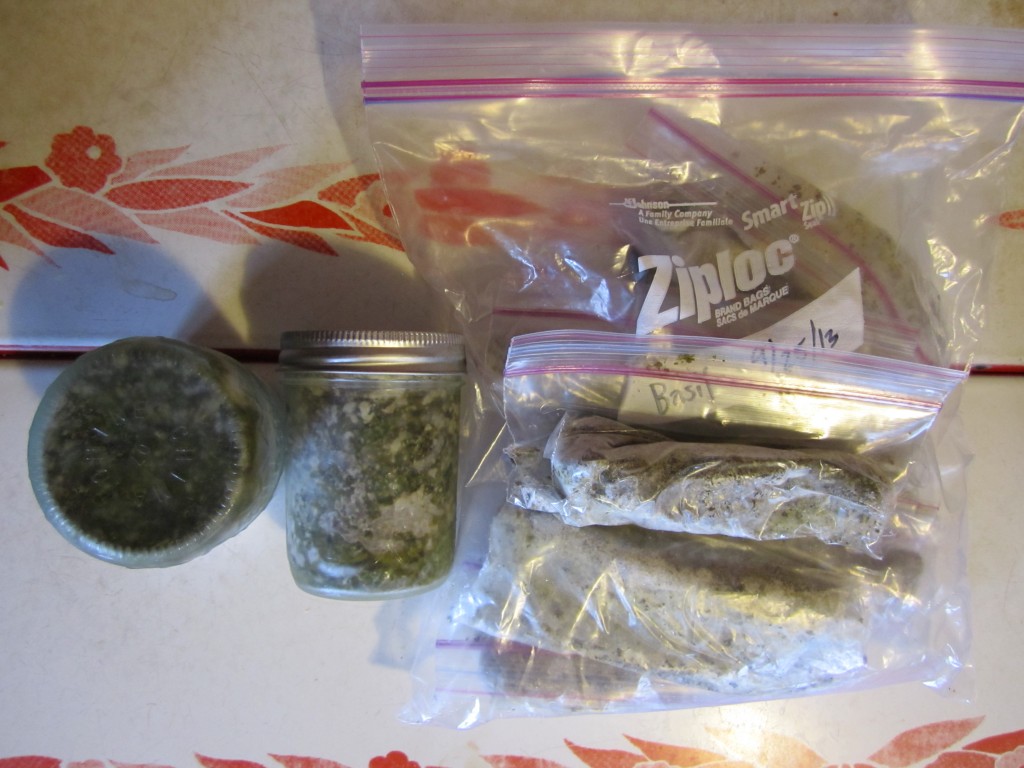
last september’s frozen basil: bagged and jarred
last september, after the big, last harvest, we stored the basil paste in two different ways: in small glass jars and in small ziploc bags (rolled and sealed to be sure all of the air was pushed out). out of these two storage methods, i much prefer the ziploc bags. here’s why: when i’m making a soup, pasta, or stir fry, all i have to do is get one of the bags out of the freezer, break off as mush basil-paste-ice-cube as i want, and put the rest away. this means i don’t have to thaw the paste before use, as i do with the paste that’s in the little glass jars. so convenient!
currently, we are trying to consume all of our stored basil before the fresh basil comes in. because, one thing is for certain: no matter how easy and versatile frozen or dried basil may be, the best is always fresh!
.:.
